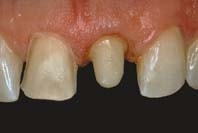Applications

In EU, Ribbond is approved to be placed on or within enamel.




Endodontic Post & Core
Recommended by many well-known lecturers, the Ribbond endodontic post and core technique minimizes the chance for root fracture and has the following advantages:
- Compared to preformed posts, there is no additional tooth removal after endodontic treatment. This maintains the natural strength of the tooth.
- Eliminates the possibility of root perforation.
- Because it is made when the Ribbond is in a pliable state, it conforms to the natural contours and undercuts of the canal and provides additional mechanical retention.
- There are no stress concentrations at the tooth-post interface.
- The Ribbond post and core is passive and highly retentive.
- Because Ribbond's translucent fibers take on the color characteristics of the composite it allows for the natural transmission of light through teeth and crowns. This provides an exceptionally esthetic result.
Technique
Other than the normal endodontic treatment, further shaping is not required to accommodate the size and shape of a preformed post. The following is a brief description of the procedure. The Ribbond instruction manual, included with a purchase, clearly describes this technique in full detail.
- Prepare the canal for normal dentin bonding.
- Inject a dual cured moderately filled composite such as a luting composite into the canal.
- Use the special Ribbond post and core instrument to carry the wetted Ribbond through the luting composite in the canal to the apical end of the canal.
- Apply composite to the protruding Ribbond ends and roughly form them into the shape of the core and cure.
- Build up the core with composite, cure it and shape it

Before

Condensing Ribbond into canal

Finished core build up

Finished with crown